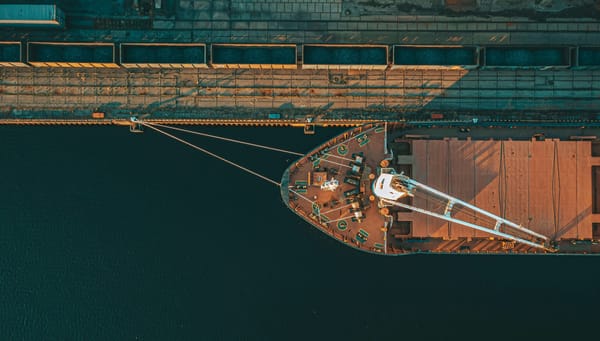New Vessel Data on the Goldfish API

TL;DR we added 25 new country datasets, so the vessel API is now bigger, stronger, and more accurate than before. You can get a complete picture of a vessel’s information and operations in a matter of seconds.
Maybe I didn’t explain that properly above, but this is a HUGE update for the Goldfish API. Our vessel database grew by 150%. We worked on this all last week and then some to get this out to you ASAP because the masses were begging for more data. It's us, we’re the masses. We loOOooOoove data. This update includes new vessels and merges new information with vessels already found in the Goldfish API.
Why Mo’ Data (Less Problems)
The more our vessel database grows, the more accurate and reliable it becomes. New vessel lists help us validate existing data, normalize formatting, and find patterns. What you get is a more comprehensive picture of what's going on, like lighting–fast answers to these questions:
- Is the vessel legally authorized to fish?
- Does it show up on any IUU blacklist?
- Was it called out by the Outlaw Ocean Project’s reporting?
- Who is the owner? The captain?
- I know the name, but what is its registration number?
What New Data
This update includes Taiwan’s, the United Kingdom's (UK), and the European Union’s (EU) vessel lists. Let me tell you, the EU’s list was a doozy, but we broke it down and incorporated all 23 countries’ vessel lists within it. #winning
To be more specific, the 25 countries added to the API are:
- Taiwan
- The UK
- The EU
- Belgium
- Bulgaria
- Cyprus
- Germany
- Denmark
- Spain
- Estonia
- Finland
- France
- The UK
- Greece
- Croatia
- Ireland
- Italy
- Lithuania
- Latvia
- Malta
- The Netherlands
- Poland
- Portugal
- Romania
- Slovenia
- Sweden
API > Online Search Engine??
The short answer is YES. (No cap). I know you love your Rolodex of vessel list websites’ Microsoft BI generic search engines. However, would you believe it if we said those are actually riddled with bad data, like the appearance of random characters? Relying on bad data to structure your supply chain’s information could set you up with various errors, so we (shoutout to Vipin and myself) went through an extensive cleaning process to remove these problems. Now the long answer long is yes, the Goldfish API is better than a common search practice.
How we Clean Datasets
Don’t worry, I won’t bore you with the nitty-gritty details here, but I will tell you we have a swaggy cleaning process. Some even say it's better than Lysol spray and heavy-duty paper towels.
1. Remove bad data
We removed many forms of bad data like random and excess ” marks, and identifiers like No name, N/A, -, ---, and (DESCONHECIDO) that are used to show data that does not exist. In the API the identifiers to show that data does not exist now return as a blank or null response.
For example, if you go to the EU’s Fleet Register search engine and type No name as the vessel name, it will return hundreds of vessels. This is not possible in the Goldfish API because of our Mr. Sparkle cleaning process.
2. Address non-English characters
In the EU’s dataset, Bulgaria has a handful of vessel identifiers written in Bulgarian Cyrillic, and Greece has vessel names written in Greek. Bulgarian Cyrillic and Greek are made up of non-Latin characters that are not commonly used internationally. We saw that the IMO and various RFMOs translate these languages into Latin-based (English) characters.
In the Goldfish API, these identifiers are translated into their English characters, and the identifier is accessible in the new schema vesselNameOther and nationalRegistryOther.
3. Standardize Formatting
We process and analyze so much data. Looking at data 24/7 enables us to identify formatting and structure patterns within certain data fields. While cleaning the EU's dataset, we identified patterns and standardized National Registration Numbers and Port of Registry.
As an example, for Bulgaria, we noticed that their National Registration Numbers and External Markings commonly followed the format XXX ####. This standardized structure is available in the API.
Remember – we also tackle Variants and Duplicates.
New Output Variables
With this MASSIVE data influx, we added 3 new unique variables: euCFR, vesselNameOther, and nationalRegistryOther. This brings our total number of vessel output variables to a whopping 43!! Kowabunga bb.
Use The API
Run, don’t walk to the Sandbar to explore the new update! As a reminder, Sandbar is our open playground environment, so you can test out all the variables using a subset of data to get the lay of the land.
For current Goldfish users, the update is live in the production environment!
Gimme The Docs
Dear Larry, I know Ryan hasn’t written to you recently, but it's okay I’ve got this covered. You can view the updated documentation right here. Before you ask, yes, the new output variables are in there. Now really, get back to your family’s vacation. C’mon, it's literally summer.
Cheers, the Goldfish Product Team
—
Interested or have questions? Reach out to the boys at sales@goldfish.io.
Wanna hear about our Alpha testing? Contact hello@goldfish.io.





